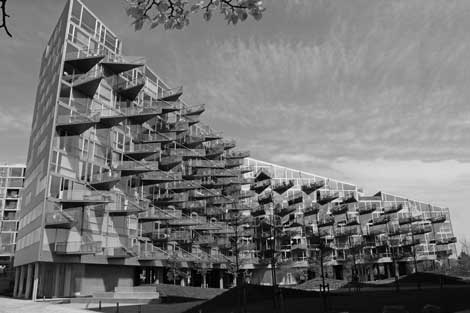Editor’s Note: With the highly-coveted Pritzer-Prize awarded this year to architect Shigeru Ban—known just as much for his disaster relief projects and elegant, temporary paper-tube architecture as for his commercial and institutional works—we asked Martina to weigh in on the redefinition of “star” architecture in our age of instability.
At the 2008 Venice Biennale, starchitects Frank Gehry and Zaha Hadid exchanged hugs while meeting amid an entourage and paparazzi with flashing cameras. But this is no longer an appropriate scene for 2014, and while these architectural celebrities are still alive, what has changed is the self-reverent applause for architect-as-genius, architect-as-artist. A sense of celebrity is now wrapped up in architects’ buildings and urban interventions, and the architects who design them are more demure about taking the limelight.
Today, the aggrandizing language of architecture as pure self-expression has been checked at the door, replaced by socially uplifting experiences in how the buildings and structures are used. Formal expression is now dominated by functional needs and intentions, and often the advantages of any particular site. It is this engagement with the land and the interaction between form, architecture and society that has changed what starchitecture means.
The Oslo Opera House by Snøhetta has a continuous concrete roof structure that acts both as a roof and a sloped walkway. Pedestrians traversing the track are able to access multiple views of the surrounding Scandinavian landscape. It is a spectacle activated and energized by people and not just the grandeur of the building. Snøhetta maintains that the design’s aesthetic is under their company umbrella and not as a product of one designer. The firm’s founders, Kjetil Trædal Thorsen and Craig Dykers, are the shy “stars” that have received the title but who continually reject the idea of one person’s vision and instead credit the team. The firm also designed the entry pavilion to the just-opened 9/11 Memorial Museum and worked on the SFMOMA expansion, capitalizing on their ability to deliver an “experience.”
Diller Scofido + Renfro are in the news now for their 40,000 square-foot MoMA expansion that will open the collection to viewers on 53rd Street. Previously, their popular Highline project in Manhattan repurposed an elevated rail line into a pedestrian walkway to make an innovative public space complementary to its environment. Like the Guggenheim in Bilbao, the Highline has now become a leading example of how a structure can revolutionize a city. The architects have risen to the ranks of “star” through public works that capture art within function.
And while the principal of BIG—Bjarke Ingalls—is like a Hollywood star with his good looks and charm (like your favorite actor, when you’re compelled to see what he does next) his buildings help people rethink the potential of architecture. The form and placement of BIG’s VM Houses in Copenhagen was defined by how each apartment balcony could access a view, making them jut out at various angles. Adjacent to the VM Houses and built three years later, the Mountain Dwellings project cared about view, but faced the urban problem of supplying parking. The final stepped form maximized solar exposure and independence for each unit, and the square footage for parking underneath.
The extravagance that brought the term “starchitecture” into popular culture during the ’90s to early 2000s receded with the crash of the economy. The architects who have risen up in that wake are now balancing the luxury of high design with an improved experience of everyday living.


